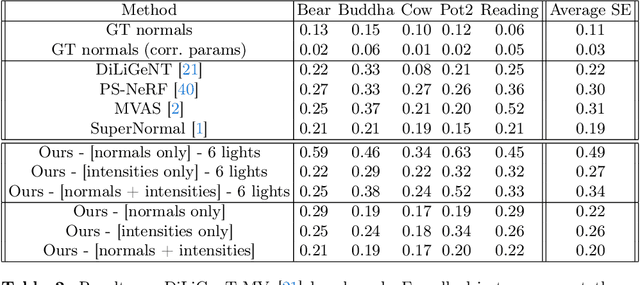NPLMV-PS: Neural Point-Light Multi-View Photometric Stereo
Paper and Code
May 20, 2024



In this work we present a novel multi-view photometric stereo (PS) method. Like many works in 3D reconstruction we are leveraging neural shape representations and learnt renderers. However, our work differs from the state-of-the-art multi-view PS methods such as PS-NeRF or SuperNormal we explicity leverage per-pixel intensity renderings rather than relying mainly on estimated normals. We model point light attenuation and explicitly raytrace cast shadows in order to best approximate each points incoming radiance. This is used as input to a fully neural material renderer that uses minimal prior assumptions and it is jointly optimised with the surface. Finally, estimated normal and segmentation maps can also incorporated in order to maximise the surface accuracy. Our method is among the first to outperform the classical approach of DiLiGenT-MV and achieves average 0.2mm Chamfer distance for objects imaged at approx 1.5m distance away with approximate 400x400 resolution. Moreover, we show robustness to poor normals in low light count scenario, achieving 0.27mm Chamfer distance when pixel rendering is used instead of estimated normals.
 Add to Chrome
Add to Chrome Add to Firefox
Add to Firefox Add to Edge
Add to Edge